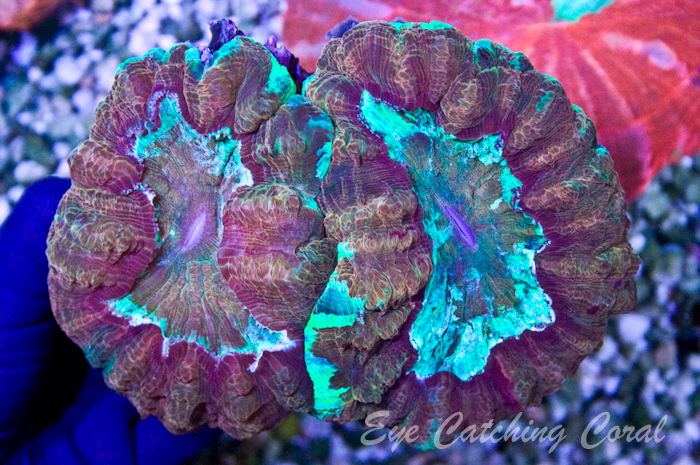A very rare and strange Acanthophyllia was really imported by Eye Catching Corals which features two identical polyps and corallites growing from a common stalk. We’ve seen “double” Acanthophyllia before which were of different sizes and colors and clearly simply happened to be growing next to each other, but this ‘Siamese’ Acanthophyllia is the first of its type we’ve ever seen.

Other species of large, solitary stony coral species may sometimes show more than one corallite or polyp per animal, even when that is not common. A perfect case in point is the recent ‘colonial Trachyphyllia‘ we featured recently but its origin is likely explained by some kind of mechanical or physical trauma in its recent past. Meanwhile, the illustrious Scolymia australis may also show a siamese syndrome by having two separated polyps growing from a common stalk, such as this mouth-watering double helping of a master scoly shared by Cairns Marine recently.

In these great all-around images of the Siamese Acanthophyllia you can see that these two identical polyps split at some point very early in their lives with double stalks visible all the way down to the base of this coral. We hesitate to suggest that this particular coral suffered damage which caused it to split, and lean more towards the possibility of a fluke budding event which is extremely rare for this species, but not unheard of in similar corals.

Scolymia lacera is a Caribbean coral which looks extremely similar to our beloved Pacific “Meat Coral” but this coral’s taxonomy is somewhat murky. While Scolymia lacera has been considered a distinct species for many decades, there is some evidence to suggest that the Caribbean analog to Acanthophyllia, S. lacera, is actually a single polyp version of the colonial Mussa angulosa.
Adding to the intrigue is the evidence that suggests that that funky mini scolymia from Western Australia is actually a novel species of solitary Micromussa which is expected to be formally described sometime this year. With the discovery of this ‘first’ two-headed Acanthophyllia we suspect that we’ll be seeing them a little more often but one thing is for sure, there’s still a lot of work to be done in understanding where all these large polyp stony corals fit on the coral tree of life.





